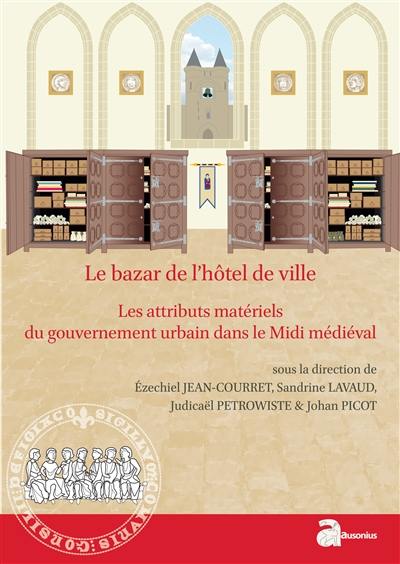
Fiche technique
Format : Broché
Nb de pages : 284 pages
Poids : 578 g
Dimensions : 17cm X 24cm
ISBN : 978-2-35613-177-5
EAN : 9782356131775
Le bazar de l'hôtel de ville
les attributs matériels du gouvernement urbain dans le Midi médiéval (XIIe-XVe siècle)
Quatrième de couverture
Le bazar de l'hôtel de ville
À la fin du Moyen Âge, nombre de communautés urbaines du Midi médiéval cherchent à affirmer leur autonomie à l'égard du pouvoir seigneurial en place. Par désir de reconnaissance d'une personnalité juridique et politique en tant qu'universitas, leurs gouvernements se sont dotés d'attributs matériels : maison commune, arca communis, écrits communaux, sceaux, clefs, bannières, cloches... Ces marqueurs des libertés municipales, qui forment un véritable bric-à-brac au sein de l'hôtel de ville, sont des outils d'exercice quotidien du pouvoir local, comme des moyens de représentation et de communication politiques ; à ce titre, ils constituent des pièces maîtresses de la « mise en signes » de l'autorité communale, véhiculant un message symbolique, pensé comme un manifeste de l'identité singulière de la ville.
Abordés jusqu'alors en filigrane par l'historiographie, ces supports matériels du gouvernement urbain sont ici placés comme objet central d'une réflexion qui a fait le pari de leur historicité et a voulu privilégier une démarche systémique et comparative, entre catégories d'attributs comme entre villes du Midi de la France, de l'Aquitaine à la Provence, dans les derniers siècles du Moyen Âge. Produit de deux journées d'études, l'ouvrage, qui réunit douze communications, propose ainsi un premier bilan sur ces attributs qu'il remet en lumière en promouvant une histoire du sensible.
At the end of the Middle Ages, many urban communities in the medieval south of France sought to establish their autonomy with regard to the power of the local lord. As they wished to be recognised in legal and political terms as a universitas their governing councils adopted different kinds of material symbols : a community house, arca communis, communal texts, seals, keys banners, bells... These markers of municipal freedoms, which constitute a really miscellaneous collection within the town hall, are the instruments of the everyday exercise of local power as they are means of political representation and communication. As such, they are the key pieces in the way the communal authority represented itself in signs and they carried a symbolic message which was viewed as a manifestation of the particular identity of a town.
Up to now these material signs of urban governance were treated in the margins of historiography but here they now play a central role in an approach, based on their historic value, which aims to adopt a systemic and comparative approach in examining these categories of items found in towns in the south of France, from Aquitaine to Provence, during the latter centuries of the Middle Ages.






